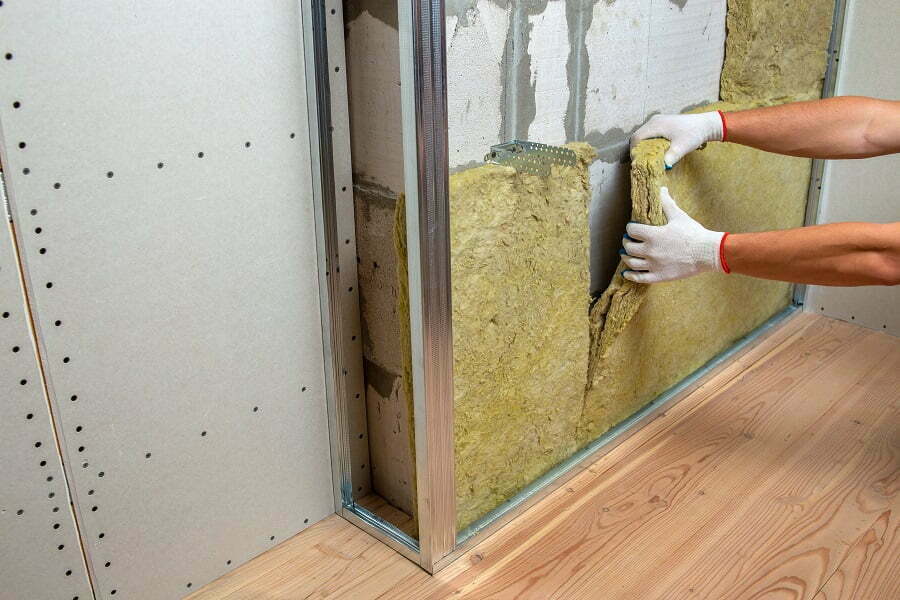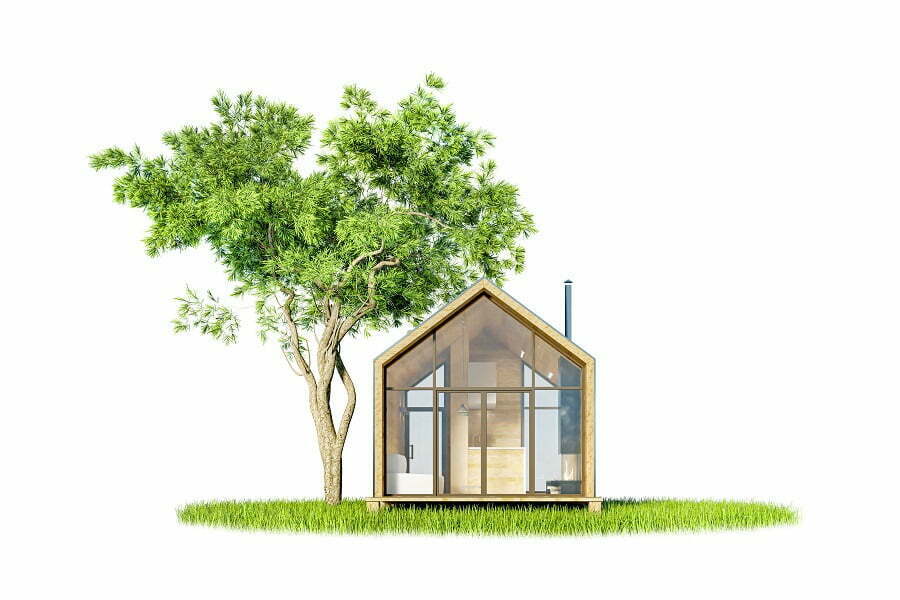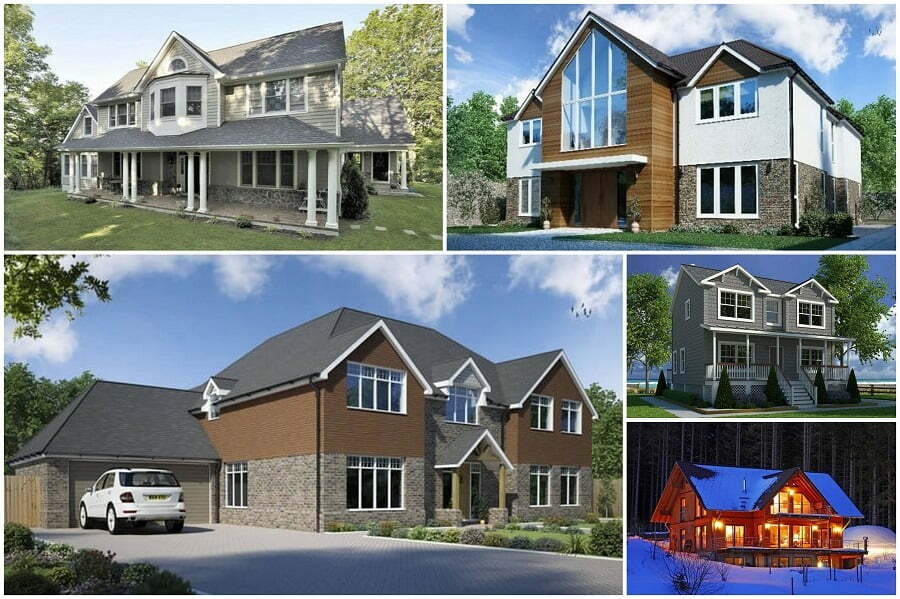Last updated on
The best and the most popular types of prefab home insulation include structural insulated panels, fiberglass, and rock wool. Here’s everything you need to know about prefab home insulation.
To determine which type of insulation to use for a prefab house, first consider the local climate, typical uses of the house, building methods, and your building budget. Most prefab manufacturers will give you insulation options.
It’s important to note that the choice of insulation greatly impacts energy efficiency, and it also has to meet the HUD requirements for manufactured homes.
Let’s discuss the main types of insulation for top prefab home types and the factors that determine how to best match the insulation to the manufactured house.
How Well Are Manufactured Homes Insulated?

Manufactured homes have many benefits, one of them being high energy efficiency. These homes are energy efficient because they are well-insulated. There are many types of prefab home insulation, and they are best suited for different types of climatic conditions and homes.
It is safe to say that manufactured homes are better insulated than site-built homes.
You will find quality insulating material in the flooring, wall panels, and roofing. This helps to separate the indoor and outdoor environments. As a result, any heat generated inside the prefab house will not escape to the outside. Similarly, any cooling that takes place in the house during summer will not go to waste due to poor insulation.
Manufactured Home HUD Code Requirements
The department of Housing and Urban Development is tasked with setting standards that help to improve the safety of prefabricated homes. The HUD also sets standards to ensure that prefab homes are reasonably sized (at least 400 square feet) and durable.
It is important to note that every manufactured home must undergo inspection to meet all the HUD standards and other industry standards. This means that if your home gets the thumbs up from the authorities, you can have peace of mind that it’s energy-efficient.
When it comes to energy efficiency, the HUD requires that every manufactured home have at least two outside doors. The doors should be located at least 12 feet apart.
One bedroom should have at least one outside window and easy access to an exterior doorway. Every bedroom meant for one person should have a floor that measures at least 50 square feet.
Manufactured homes should have sufficient windows for ventilation. In addition to windows, there must be mechanical ventilation for bathrooms and kitchens. The HUD has also set standards for the insulation and accessibility required for these homes.
What Is the Best Insulation for a Prefab House
One of the best insulation materials for prefabricated homes is considered mineral wool insulation. Mineral thermal insulation is made from glass, rock, or stone wool. They are high-density insulation materials that offer impressive fire resistance.
However, they are not eco-friendly. These industrialized materials are made up of wool-like fibers and are often combined to create insulation boards, among other products. While they may help improve your home’s energy efficiency, they are not eco-friendly because their production processes usually lead to environmental pollution.
Other insulation materials that can also be used in prefab homes are; polyurethane foam and polystyrene foam. These two materials have impressive insulating properties, but they also have some disadvantages that make them less suitable for use in prefabricated homes.
The R-Value
The R-Value is a measure of thermal resistance. It measures how well a window, door, ceiling, insulation material, or any other two-dimensional barrier can prevent heat conductivity in a room. In the building industry, thermal conductivity is measured in thermal resistance per unit area. The higher the R-value, the better the insulating properties of a material. If several layers of insulating material are put together, the resulting R-value is the sum of the R-values of the individual layers.
The recommended R-values for homes in different climatic zones differ from one place to another. Most manufactured homes come with R-21 insulation in the structure’s outer walls and R-38 insulation in the roof. In areas that experience extreme winter, the roof insulation can be upgraded to R-45. The foundation walls will require R-21 insulation if the foundation is above ground. If the foundation is below ground, R-13 foundation wall insulation is required. There is also the option of installing R-30 insulation on the floor if you do not want to insulate the foundation walls.
How to Pick the Best Insulation for a Prefab House
The choice of insulation material for your prefab home is not a decision you can make on your own. During the design process, the builder will consider your needs and industry best practices to find the perfect insulating materials for different parts of the home.
When choosing insulation, you should first determine what type of insulation you need. There are two basic types: rigid and flexible. Rigid insulation comes in several forms, including fiberglass, rock wool, mineral wool, cellulose, and polystyrene. Flexible insulation includes batts, rolls, and blankets. You may want to combine these two types of insulation depending on where you plan to install them.
Next, you need to decide how much insulation you need. How much insulation you need depends on the size of your prefab home and its location. For example, if you live in an area with extreme weather conditions, you might need more insulation than someone who lives in a mild climate. Also, you may want to add extra insulation around windows and doors to keep out cold drafts.
Once you have chosen the right amount of insulation, you must decide which part of the home you would like to insulate. You can insulate the entire home or just certain areas such as the basement, attic, garage, crawlspace, etc. It’s important to remember that the insulation you choose must withstand the environment and temperature changes in the area you intend to insulate.
How to Insulate a Mobile Home
One option for insulating your mobile home is blowing insulating foam onto the underbelly of your mobile home. Fiberglass and rock wool insulation can also be used.
Types of Insulation
Over the years, many types of insulating materials have been developed. They include structural insulated panels, mineral thermal insulation, cellular thermal insulation, synthetic thermal insulation, and BioSourced thermal insulation. Each of these materials has pros and cons that are well-understood by builders.
Structural Insulated Panels
SIPs, as they are normally called, are panels made by sandwiching insulating material between two oriented strand boards, also known as OSB. The result is a high-performance, lightweight building system that is cost-effective, energy-efficient, and incredibly strong.
SIPs are over 50 percent more energy efficient than traditional timber building components. These panels also reduce labor demands during construction and reduce construction labor costs by over 55%. In addition to that, SIPs can significantly reduce construction time.
Mineral Thermal Insulation
Also known as mineral wool insulation, this insulation material is made from slag and stone. It is sometimes referred to as stone wool, slag wool, or rock wool insulation. The manufacturing process of mineral thermal insulation is similar to making cotton candy.
Mineral thermal insulation has numerous benefits. For one, it has superior flame retardant characteristics. Secondly, it is a poor thermal conductor, which has great insulation properties. Thirdly, mineral thermal insulation is a great acoustic dampener. These properties make mineral wool insulation the best insulation material for prefab homes.
Synthetic Thermal Insulation
As the name suggests, this is an insulating material made from synthetic raw materials. It is also known as chemical, thermal insulation. These are insulating materials made from synthetic fibers.
The most common synthetic fiber used to make synthetic thermal insulation is polyester. The polyester fibers are processed to create insulating material of various sizes and thicknesses. The main benefit of synthetic thermal insulating materials is that they are much cheaper than natural or mineral wool insulation.
BioSourced Thermal Insulation
These are insulating materials made from natural materials, mostly plant-based products. Much research has been done on the viability of using plant-based products, such as sawdust, coconut leaves, palm kernel fibers, sargassum, latan leaves, banana leaves, and bulk sugarcane leaves insulating materials.
The main advantage of biosourced thermal insulating materials is that they are biodegradable and eco-friendly. They are also readily available, renewable, and extremely cheap compared to other types of insulation materials.
Cellular Thermal Insulation
Cellular glass is a material formed when carbon and glass react at extremely high temperatures. The material is impermeable or waterproof and has exceptional insulating properties.
Most nuclear power plants use foam glass or cellular glass for insulation. Usually, recycled glass and sand are used as the raw materials in the foam glass manufacturing process. Foam glass is non-combustible, incompressible, strong, water-resistant, and 60% recyclable. These properties make it suitable for home insulation.
Internal Insulation
Both interior and exterior walls of prefab homes usually come with insulation. While the outer walls are insulated to thermally separate the indoor and outdoor environments, interior insulation helps with sound and heat insulation. This is crucial in isolating different rooms in the house. If you open the exterior door and let in cold air during the winter, the interior insulation will prevent the cold air from affecting temperatures in other rooms. The insulation will also help dampen sound, preventing it from getting from one room to the next.
Floor Insulation
Whether you have insulated the foundation walls or not, your floor needs to be insulated. This will help to ensure that heat is not lost through the floor. Insulating the floor also helps with sound insulation.
Roof Insulation
The roof can get heated to high temperatures during a hot sunny day. The heated roofing material can raise indoor temperatures significantly. Similarly, snow on the roof can make the house extremely cold if there is no insulation. When hailstones fall on metal roofing, the sound inside the house can be shuttering. By installing suitable roof insulation, you can provide sound and heat insulation to your home.
The Cost of the Insulation System
The cost of insulating a prefab home can range from $500 to $7,000, depending on your choice of contractor, insulating material used, and size of your home. Fiberglass insulation costs around $1 per square foot, so the smallest legal manufactured home of 400 square feet will cost just $400 to insulate, but this is on the lower side.
FAQ
Yes! Prefab homes are built with an extensive amount of insulation. They are designed to keep out heat and cold and minimize noise.
Prefab homes are generally built with a lot of insulation. Some builders even include additional layers of insulation. However, if you want to add extra insulation, you should contact a professional who knows how to install it properly.
Most prefabs use fiberglass insulation. It’s lightweight and easy to work with. It comes in rolls that can be cut into any shape needed.
Manufactured homes are typically insulated with structural insulated panels (SIPs) or spray-in-place cellulose insulation. A licensed installer can install these types of insulation.
You can certainly try to lay down your own insulation. But it may not last very long. You’ll probably end up having to replace it sooner than expected. Instead, hire a qualified insulation contractor to install quality insulation.
Modular homes are made using factory-built components. Therefore, they are usually more durable and weatherproof than other kinds of houses. If you live in a region where winters are harsh, then you might want to look at a modular home specifically built for that region.
It depends on what type of insulation you choose and how old it is. For example, fiberglass insulation can be replaced every ten years. Rockwool insulation can last 30 years or longer.
Foam or fiberglass insulation is most commonly used under a mobile home. It’s relatively inexpensive and easy to install.
Insulation keeps your home warm in the winter and cool in the summer. Without it, your home will lose energy and become uncomfortable. In addition, without insulation, moisture can get trapped inside your home and cause mold growth.
Related reading:
Table of Contents





